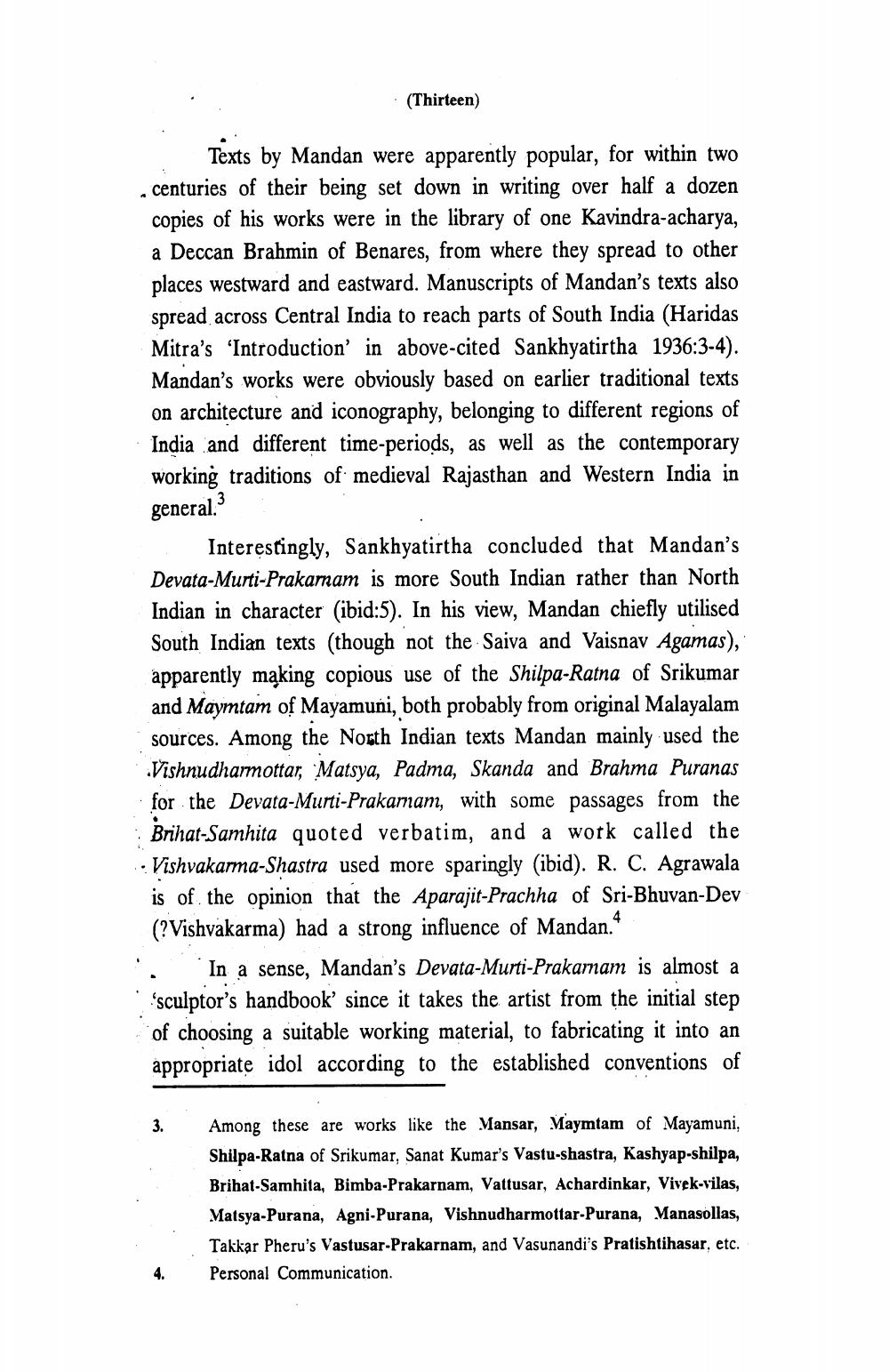________________
(Thirteen)
Texts by Mandan were apparently popular, for within two centuries of their being set down in writing over half a dozen copies of his works were in the library of one Kavindra-acharya, a Deccan Brahmin of Benares, from where they spread to other places westward and eastward. Manuscripts of Mandan's texts also spread across Central India to reach parts of South India (Haridas Mitra's 'Introduction' in above-cited Sankhyatirtha 1936:3-4). Mandan's works were obviously based on earlier traditional texts on architecture and iconography, belonging to different regions of India and different time-periods, as well as the contemporary working traditions of medieval Rajasthan and Western India in general.3
Interestingly, Sankhyatirtha concluded that Mandan's Devata-Murti-Prakarnam is more South Indian rather than North Indian in character (ibid:5). In his view, Mandan chiefly utilised South Indian texts (though not the Saiva and Vaisnav Agamas), apparently making copious use of the Shilpa-Ratna of Srikumar and Maymtam of Mayamuni, both probably from original Malayalam sources. Among the North Indian texts Mandan mainly used the Vishnudharmottar, Matsya, Padma, Skanda and Brahma Puranas for the Devata-Murti-Prakarnam, with some passages from the Brihat-Samhita quoted verbatim, and a work called the · Vishvakarma-Shastra used more sparingly (ibid). R. C. Agrawala is of the opinion that the Aparajit-Prachha of Sri-Bhuvan-Dev (?Vishvakarma) had a strong influence of Mandan.4
In a sense, Mandan's Devata-Murti-Prakarnam is almost a 'sculptor's handbook' since it takes the artist from the initial step of choosing a suitable working material, to fabricating it into an appropriate idol according to the established conventions of
3. Among these are works like the Mansar, Maymtam of Mayamuni, Shilpa-Ratna of Srikumar, Sanat Kumar's Vastu-shastra, Kashyap-shilpa, Brihat-Samhita, Bimba-Prakarnam, Vattusar, Achardinkar, Vivek-vilas, Matsya-Purana, Agni-Purana, Vishnudharmottar-Purana, Manasollas, Takkar Pheru's Vastusar-Prakarnam, and Vasunandi's Pratishtihasar, etc. Personal Communication.
4.




